Fly Ranch Project
12-Month Roadmap
March 2019
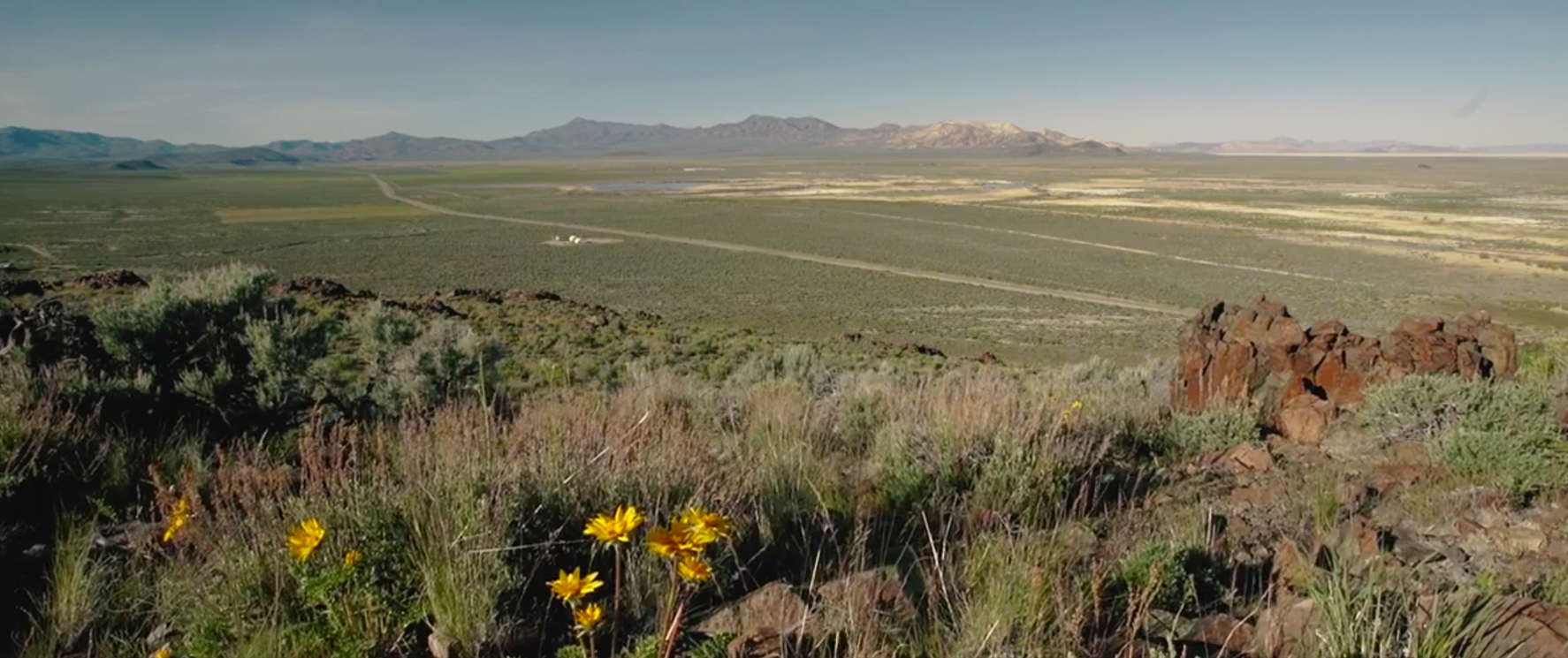
Each August, the annual Burning Man event transforms a desolate corner of northern Nevada into a thriving temporary metropolis fueled by creativity, experimentation, and awe. In 2016, the organization behind this city acquired Fly Ranch, a 3,800 acre property just north of the event site. This property is home to dozens of hot and cold springs, three geysers, acres of wetlands, dozens of animal species, and more than 100 identified types of plants. The Fly Ranch project is an opportunity to create a year-round rural incubator for Burning Man culture and a catalyst for innovation and creativity in the world.
Fly Ranch is also unfolding and experimental process. The land could be home to a range of projects including a desert art park, an energy incubator, an organic farm, a botanical garden, a site for interactive teaching and learning, a Burning Man laboratory, a healing center, makerspace, an event venue, a sustainable model for communal living, and much more. The future of this project is an opportunity to mobilize the desert-tested ingenuity of the Burning Man community and the inspiration of a greater creative culture to build scalable and sustainable solutions in one of the harshest climates in the world.
2018 was a year of developing our capacity and experimenting with models for long-term programs. In 2018, the Fly Ranch Project:
-
Invited to the public for Leave No Trace Trainings, Wilderness First Aid courses, and weekly Nature Walks
-
Prototyped work weekends and overnight campouts
-
Began to clean the property and undertake key infrastructure projects like a small solar grid, composting systems, and walking pathways
-
Completed a 14-month Land Fellowship and a Renewable Energy fellowship
-
Welcomed over 2,200 people to the property
2019 will be a year of planting the seeds of the first long-term projects at Fly Ranch and expanding engagement with a growing community. We’re making investments in site improvements and infrastructure. Friends of the Black Rock High Rock will host four nature walks per week and seven camping trips. We will host eight to ten other community-organized gatherings. We are launching a multi-disciplinary design challenge that will create the foundational infrastructure of Fly Ranch. We’ll be working on ways for members of the Burning Man community and the public to bring their art, infrastructure, and offerings. We’re transitioning towards long term environmental, fiscal, and operational sustainability.
This document is an overview of our current work and where we hope to go in the next 12 months. This plan, like the project, is a work in progress and the only guarantee is that some things will inevitably change. We have tried to make it clear where there are still questions remaining and where concrete plans differ from hopeful ambitions.
1. Introduction
As a community, we’ve become very good at “doing Burning Man” for a week at a time. Every year, we come together in a harsh landscape to build the world’s greatest DIY city. How would things be different if we wanted to create a Burning Man experience that didn’t disappear in a week, but instead lasted for months, years, or even generations? What new needs would we have? How would this change the way we approach infrastructure, finances, decision making, and social interactions? What new opportunities does this present to exponentially increase Burning Man’s impact on the world? The Fly Ranch Project is our collective opportunity to answer those questions.
Survival in a scarcity-driven world drives us to be consumers, participate in market economies, and rely on nationalized or privatized grids, utilities, and networks. If people could exist in cooperation with the environment while meeting their basic needs, creativity could flourish and new ideas could be fostered without the constraints of “the way things are”. Fly Ranch serves as a test site to prototype methods of radical self-reliance and self-expression for both the Burning Man community and the wider world. Our remote desert landscape is scalding in the summer, frozen in the winter, and flooded for portions of each year. We don’t have power, plumbing, cellular coverage, or shelter. This lack of infrastructure, current resources and remoteness make it a perfect place for a living laboratory to explore new solutions and creative ideas for community, art, sustainability, architecture, closed-loop systems, and agriculture, as well as personal and interpersonal development.
If we can do it here, it can be done almost anywhere.
Like with Black Rock City, our organization’s focus is on creating a container and then empowering and inviting others to fill that space with their ideas. Eventually, we can generate shelter, water, composting, energy, and food all from our immediate environment. The Burning Man community is brimming with potential. Fly Ranch can catalyze this passion and creativity in our midst and give it a platform for inspiring the self, the community, and the world.
This is an ambitious undertaking and one that will take time, experimentation, collaboration, and a fair amount of trial and error. It won’t be easy, but this is Burning Man. Doing difficult things in inhospitable places is kind of our specialty.
2. Goals
In the next 12 months, we have five broad goals:
-
Launch design challenge for foundational infrastructure.
In pursuit of Fly Ranch being a community generated space, the Fly Ranch project will launch a series of design challenges starting in 2019 to provide the site with foundational infrastructure for supporting future activities of larger size and longer duration.
-
Open Fly Ranch for multi-day visits and gatherings.
Increasing the number and variety of opportunities for public access and interaction with the property are a priority for 2019. We will do this through our programs including Nature Walks, camping, Work Weekends, Fly Ranch Guardians, and Community Events discussed in detail below. Last year we welcomed over 2,000 people onto the property. This year we’d like to bring 4,000.
-
Redesignate zoning and tax status.
We are anticipating uses for the 53 parcels of Fly Ranch and working closely with Washoe County. Regular communication and cooperation will ensure that projects are done safely and legally.
-
Prioritize academic and environmental stewardship projects.
After 14 months of observing how the property changes, we’re able to engage in programming that avoids damaging the property and helps nurture it where that is needed. We’re going to continue to support academic and environmental projects.
-
Begin transition toward financial sustainability.
The Fly Ranch project is migrating towards having its core operations covered through revenue. Last year we generated $46K; this year we’d like to double that and generate $92K. This shift is not only important for the security of the project, but once income covers base expenses (roughly $350k for staffing, taxes, insurance, and site maintenance) donations will be able support the larger, more ambitious ventures we’d like to pursue.
3. Programming

There is so much that is possible to do on this 3,800 acres that one of the greatest challenges has been what to do when and how. The model we’ve been following is to first support small scale experiments, and then iterate and scale what works. In 2019 we will be scaling up the current programs like the Nature Walks and Work Weekends that were tested last year, and beginning new programs (like camping!) on a small experimental scale. Here’s what’s in store for the year:
Nature Walks: Last year, the Friends of Black Rock-High Rock partnered with us to host Nature Walks on the property several times a week. These walks officially opened the property to the public for the first time in 20+ years and enabled the Burning Man community and the general public to come to understand the diversity and beauty of the property, not just the geyser. Friends has many years of experience bringing folks out to the Northern Nevada high desert and is a valued conservation group in the area. Nearly 2,000 people joined us for a walk during the Spring and Summer for 2018, and we have developed a program that is capable of welcoming even more over the course of 2019 in culturally and environmentally appropriate ways.
Campouts: Friends of Black Rock-High Rock will build off of the Nature Walk program and begin offering public campouts on the property. The model of open ticketing and sliding scale donation used for the Nature Walks will be used for these as well. Camping is slated to begin in late Spring.
2020 Fly Ranch Design Challenge: A key focus for the next few years is the LAGI 2020 Fly Ranch design challenge. The program aims to lay a foundational layer of innovative and sustainable community-sourced infrastructure. We’ve partnered with the Land Art Generator Initiative (LAGI) to produce a design brief to solicit site-specific submissions across five broad categories: Power, Water, Shelter, Food, and Regeneration. LAGI has produced open-call international design challenges for renewable energy infrastructures that are also works of art in cities like Dubai, Copenhagen, Melbourne, and more. Fly Ranch and LAGI have partnered to bring the ambitious proposals of the innovative LAGI design community together with the desert tested ingenuity and building experience of the Burning Man community. Selected designs will be awarded grants to build prototypes on Fly Ranch in 2021.
Fly Ranch Guardians: There are few experiences as serene and beautiful as having the sweeping Hualapai Valley to yourself. As a way to develop a continuous presence on the site, educate drop-in visitors, and tackle small ongoing projects, we will publicly launch the Fly Ranch Guardian program. This program will allow individuals or small groups to undergo a short orientation, wilderness training, and then become a short term resident of Fly Ranch anywhere from one night up to a week. This program is being supported and launched by the Black Rock City Rangers volunteers and leadership.
Work Weekends: Continuing on from our experiments in 2018, the Fly Ranch team will continue to host Fly Ranch Work Weekends roughly once a month for volunteers to come to spend a weekend camping out and working on various projects throughout the property. Want to know when Work Weekends are happening? We send a heads up and signup sheet out to the Fly Ranch Newsletter each time one is around the bend, so sign up for the newsletter.
Community Events: As Fly Ranch becomes available to the community and public to start producing events, we’ have to be mindful of how that door is opened in a way that is in line with our cultural principles and environmental responsibility. We will start in 2019 with a few prototype events, produced by individuals who have attended work weekends or gatherings at Fly within the last year. The events will be structured, organized, and executed by community members with operational and services support provided by the Fly Ranch team. Some proposed events on deck include A Burners Without Border summit, a Filmmaker’s summit from Profiles in Dust, a STEAM Education weekend with the Desert Research Institute, and a writing expedition for womyn and non-binary writers of color.
Participation: What do you want to bring to Fly Ranch? To help answer that question, this year we’ll be working on processes for the community and public to submit proposals for bringing art projects, gatherings, residencies, partnerships, and media projects to the property. We’ll have to balance these requests with the evolving conditions, sequencing, regulatory requirements, and resources of the project, especially in the beginning, but these a helpful way to asses interest and prepare for implementation of projects in 2020.
4. Budget
Our 2019 budget is still dependent on generous gifts from those who see and believe in the promise of Fly Ranch, BMP funds, and by our programming revenue. Starting in 2019, we will explore models for financial sustainability including site usage, agriculture production, workshops, and community stewardship.
Last year, we began experimenting with sliding-scale donations as part of the Nature Walks offered by Friends of Black Rock-High Rock. This pilot program generated income which we split with the Gerlach-based nonprofit. This model can be a template for scaling this program and developing future activities like camping, event production, and workshops. A few key features have worked well with this model:
-
The program is managed by the community, not our team or Burning Man Project.
-
Reservations are available to the public – anyone may join a walk.
-
Sliding scale donations mean anyone can participate.
-
The revenue share provides financial support to the community.
This model could allow artists, theme camps, workshop hosts, event producers, and others to initiate projects.
For 2018, our budget projected roughly $350,000 in expenses, and we came in close to that. We anticipate similar expenses for our base operations this year, but because we are making investments in property improvements and laying the administrative foundation for the 2020 Fly Ranch Design Challenge, we are projecting total expenses nearing $650k, $200k of which is for kicking off design challenges. This will be partially offset by an anticipated increase in revenue. Programs like Nature Walks, camping, and community events will generate close to $100,000. This roadmap lays out what we hope is possible within this budget.
Being preemptively transparent about our budget is important. Donors will want to know what they are supporting. Transparency is valuable for enabling participation, building trust, raising money and receiving feedback.
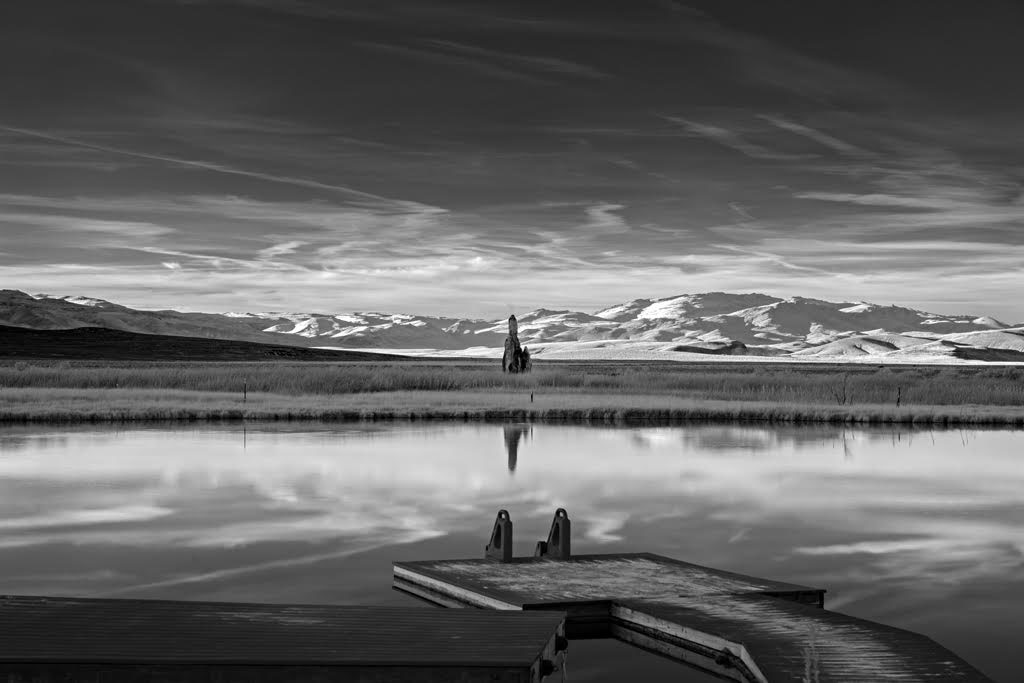
5. Operating Structure
The Fly Ranch project is staffed by two guys named Matt and Zac. The Fly Ranch Working Group is a cross-departmental Burning Man Project staff group that supports strategy and operations for Fly Ranch. This group is: Director of Philanthropic Engagement Theresa Duncan, Director of Communications Megan Miller, our Fly Ranch Land Fellow Lisa Schile, Associate Director of Event Operations Erin “Playground” MacCool, Nevada Properties Manager Lisa Nash, Zac, Matt, and Burning Man Cultural Founder Will Roger Peterson. The Group reports to Marian Goodell, Burning Man CEO, who oversees the project with the Founders and Board.
Will, who has held the vision for the purchase for decades, and Daniel Claussen, who led the acquisition, are Advisors. Doug Robertson and Raymond Allen help support the project in their roles as Director of Finance and General Counsel. We are also integrating with programming across the organization including Burners Without Borders, Art and Civic Engagement, Volunteerism, and more.
Like Black Rock City, our organization’s role is primarily that of creating a context that supports and nurtures people’s individual projects and ideas. We are a platform, not the producers. We don’t expect that “Fly Ranch will be doing something” but instead camps, artists, and organizations will be “doing something at Fly Ranch.” We secure the perimeter, build the roads, provide basic infrastructure, and create the space for people make magic happen. While the process will become more structured over time, these days it starts simply by someone reaching out and saying “Hey, I’d like to do this.” Starting in 2019, this will happen through a series of participation forms on our website.
We run as a do-ocracy where anyone can recommend a project. Once someone submits a proposal, the Working Group will offer feedback. We look at whether a project meets our needs for sustainability, fits into the current scope of the project, and what precedents it creates. We share the document with the 87 staff in our organization’s Slack channel. Once a proposal has been reviewed, we offer feedback and/or make a final determination on the project.
A constraint on our current process is the ability to scale. More people want to be involved than a team of two can directly and meaningfully engage with given the current tools at our disposal. So far over 3,500 people have signed up for the Fly Ranch Fly Ranch Newsletter. We send updates to this list announcing work weekends, gatherings, and other projects to get involved with. Through these events, self-organized volunteer groups have started to organically develop around areas like renewable energy, water use, art, zoning and more. These teams will help the project address complicated questions across diverse disciplines that require expertise, research, and discussion.
6. Zoning & Permitting
Fly Ranch is composed of 53 individual parcels, all of which are zoned for General Rural in High Desert Area, a fairly permissive tier. Below are some of the most relevant examples of activities that are either Allowed (things that we can do how we please or do with a simple inspection) or Allowed with Permit (either a basic administrative permit or a special use permit).
Allowed: |
Allowed with Permit: |
Residential Housing (1 house/40 acres)
|
Automotive Repair
|
So far, we’ve been able to fit most of what we want to do (nature walks, small events, small scale-tests) into the approved categories. Within the next couple of years, however, we’ll need to reconsider the designations of the property so we can engage in the large scale ambitious type projects we hope to see on the property.
In 2018 we began what is sure to be an ongoing conversation with Washoe County planning officials about the future anticipated uses of Fly Ranch and how our team can work closely with the county as the project and property evolve. As we look forward to more programming, larger events, and deployment of foundational infrastructure, we will have to renew permissions for some or all of our 53 parcels. For the next year, it is likely that we will submit a Special Use Permit for the year while working concurrently on a proposal to migrate to use-specific zoning under a Washoe County Specific Plan to provide for much greater flexibility for 2020 and beyond.
Additionally, Fly Ranch is currently the recipient of a tax benefit because the property is used for agricultural purposes. We need to continue to fulfill our obligations (see: NRS 361A) that allow us to receive a benefit or pay back taxes on the property. Currently, this use is cattle grazing but could be lots of different things such as beekeeping or crop cultivation.
7. Technology
As much as possible, we will use open source software in our projects. Using open source software lets us avoid vendor lock-in. We can edit, control, combine, and alter our software. We have started in this direction. We recently completed a review of discussion software and selected Discourse. We solicited feedback from the technical team, stakeholders, maintainers of different technology platforms. We will continue to use this same strategy for future projects.
Short-Term Goals:
We have short-term goals for a base technology infrastructure. The timing estimates below are rough.
-
Discussion software (3-4 mo). We will be using Discourse for this.
-
Decision-making software for presenting and evaluating ideas together (12-18 mo.). Examples of this include Loomio and Ethelo. These tools will let us assess specific ideas like parcel-by-parcel proposals, art, or energy projects.
-
Internal and external project management software (12-24 mo.). We’re examining OpenProject for this.
If you are interested in our technical hopes for Fly Ranch and the greater Burning Man Project, we urge you to read the Fly Ranch Technology Roadmap. These projects will take years to complete, but we want to start off in a direction that allows us to achieve our long-term goals. Above all else, our guiding vision is to build an open source platform that lets Fly Ranch engage our community, make decisions, and self-organize for participation as a community.
These tools can make our project inclusive, engaging, and accessible to just about anyone. We want our website to be a comprehensive, and yet still consolidated view of our project. In under a minute, someone could explore our property, proposals, see the history of the discussion, see who was involved, interact with maps and videos, then claim a task they are suited for. People could connect with like-minded individuals through ideas and then become collaborators.
8. Environment
The first step to repairing, preserving, and engaging the abundant natural resources at Fly Ranch is to really understand what’s there. To that end, in 2018 and 2019 our environmental focus has been and will continue to be on supporting scientific and academic research that provides an in depth understanding of the property. This will enable members of the public and Fly Ranch participants to propose and undertake well-informed projects and allow our team to better understand the impacts of decisions and development.
In June of 2018, Burning Man’s first Land Fellow, Lisa “Scirpus” Beers, completed a 14-month residency on Fly Ranch to help develop a preliminary environmental baseline for the property and coordinate the inaugural scientific and academic projects on the property. Her work is instrumental to our current understanding of the land we are now stewards of. In addition to her ongoing blog series about experiencing Fly Ranch through the five senses, her data include:
-
Fly Ranch Species List: Compilation of all species identified on the property.
-
Fly Ranch Plant Map: Interactive map of plant species.
-
Overview of Artifacts: An interactive map showing all human-made objects <50yrs.
-
Fly Ranch Weather Data: Readings at 3 sites on the property over the course of a year.
-
Fly Ranch Light Data: Readings at 2 locations over the course of a year.
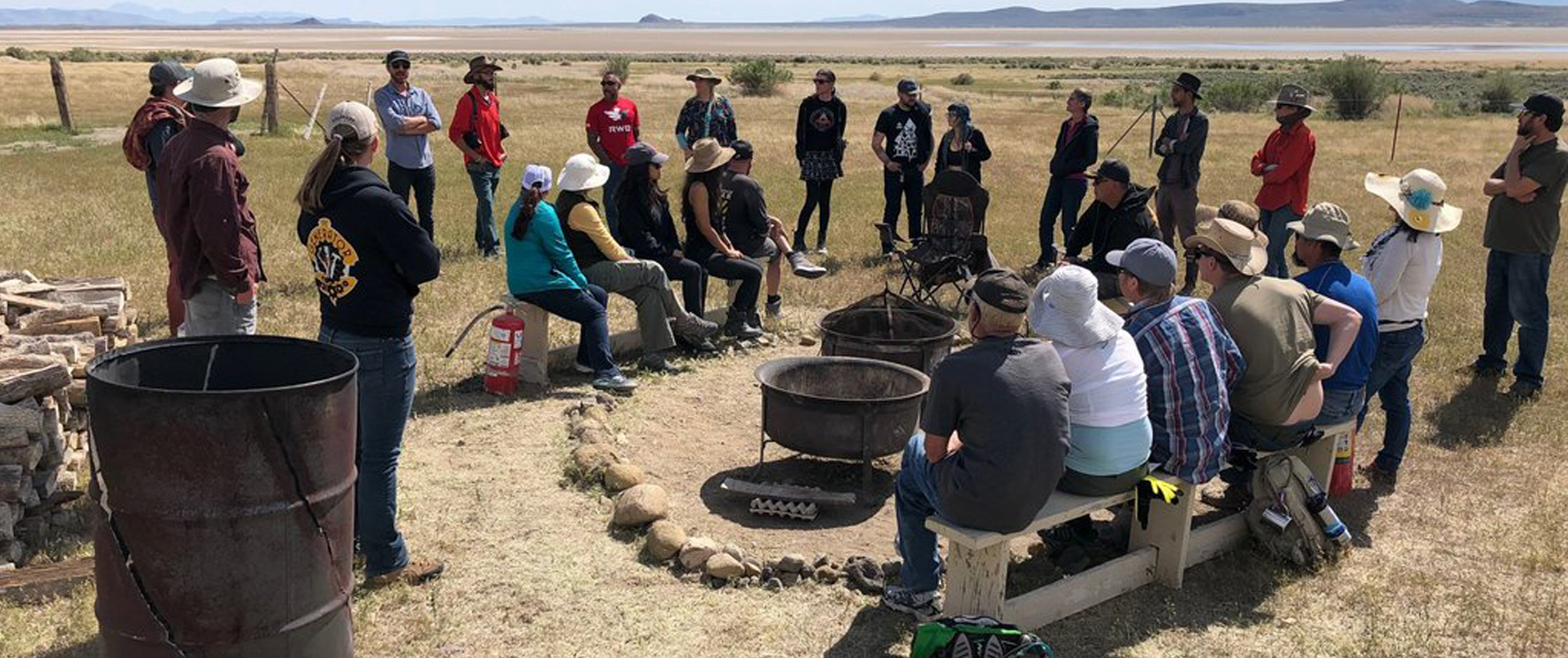
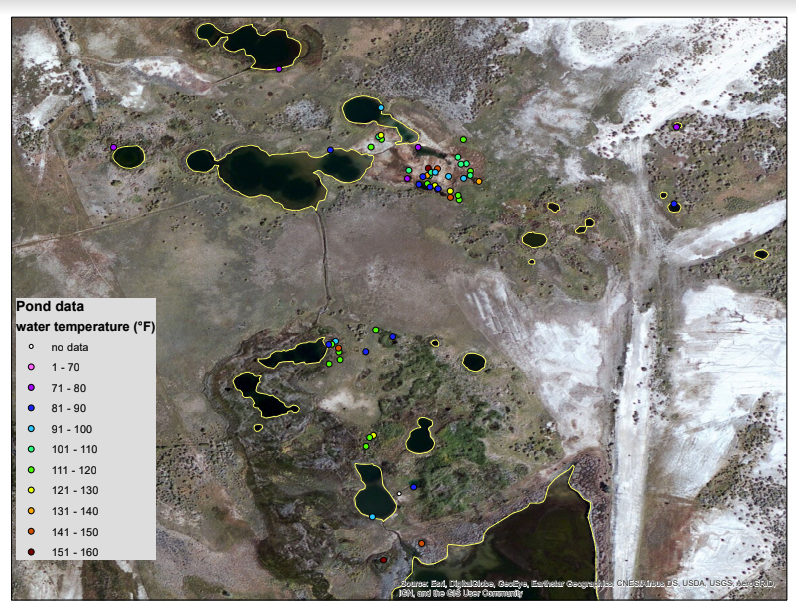
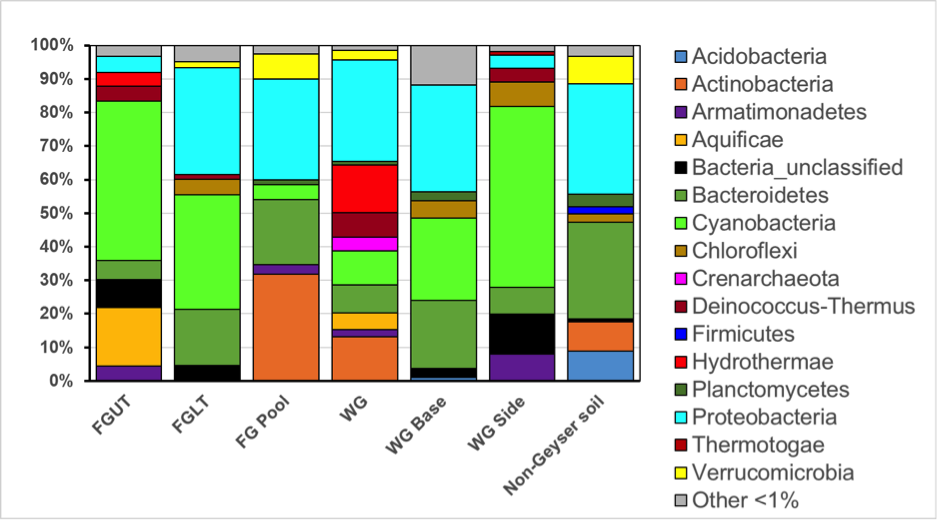
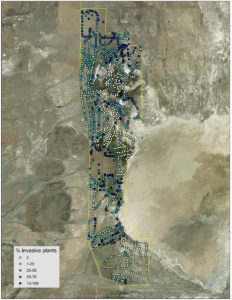
 Dam Management:
Dam Management:  Larry Harvey at Fly Ranch in 1997.
Larry Harvey at Fly Ranch in 1997.